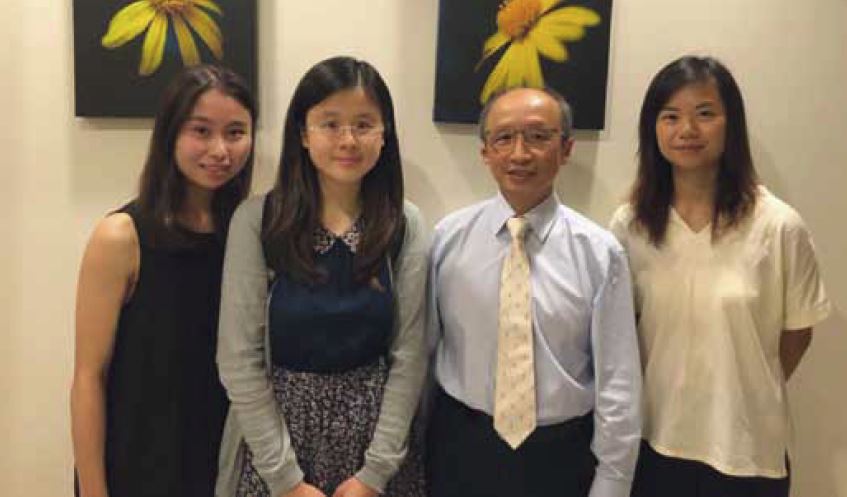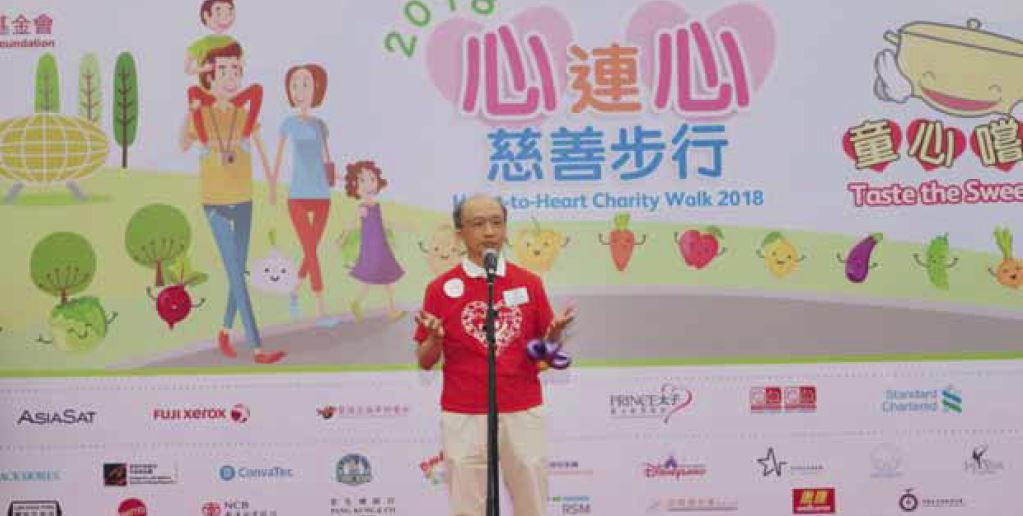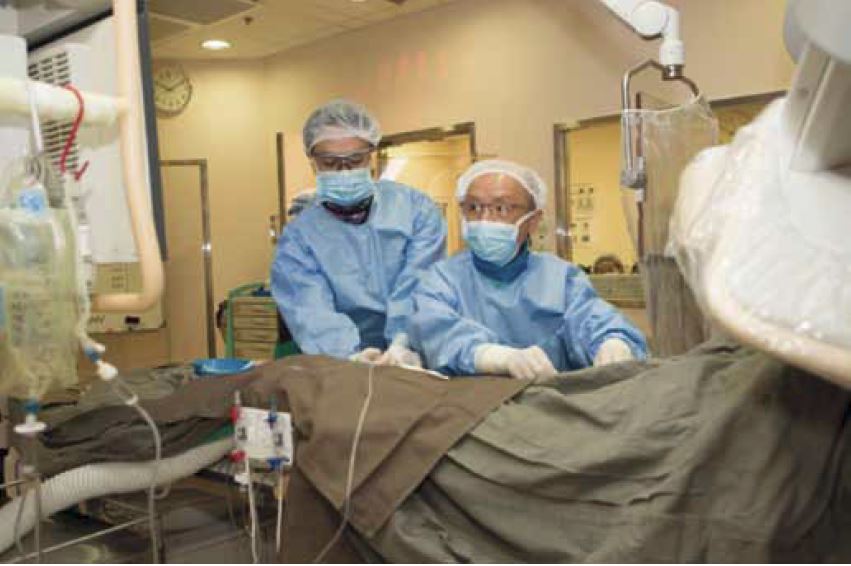© Hong Kong Academy of Medicine. CC BY-NC-ND 4.0
HEALTHCARE FOR SOCIETY
Healing hearts in paediatrics: an interview with Dr
Adolphus Chau
Cherry Lam1; Natalie Cheuk2;
Caitlin Yeung2
1 Year 5 (MB ChB), The Chinese
University of Hong Kong
2 Year 4 (MB BS), The University of Hong
Kong
Dr Adolphus Kai-tung Chau’s dedication to advancing
paediatric cardiac interventions available in Hong Kong has been evident
throughout his career. Dr Chau has served as a consultant at the
Department of Paediatric Cardiology at Grantham Hospital and Queen Mary
Hospital for 25 years, including 15 years as the Chief of Paediatric
Cardiology. He has played a pivotal role in implementing new
techniques at these hospitals. Dr Chau currently works closely as an
interventional paediatric cardiologist with surgeons, anaesthesiologists,
and allied healthcare professionals to ensure the best possible care for
his patients. His time is also spent in research on long-term outcomes
after interventional and surgical procedures and teaching and training
younger generations of doctors, students, and nurses locally and abroad.
As Chief of Service, Dr Chau oversaw many regional
firsts in paediatric cardiology in Hong Kong, including the establishment
of the first extracorporeal membrane oxygenation (ECMO) programme. Among
his many experiences, the introduction of mechanical circulatory support
by ventricular assist device (VAD) for children is a bittersweet story
that Dr Chau holds close to his heart. In 2001, an 11-year-old girl with
dilated cardiomyopathy complicated by end-stage heart failure was placed
under Dr Chau’s care. Without a heart transplant, the girl would rapidly
succumb to her illness. Up to that point, paediatric heart transplantation
had never been successfully attempted before in Hong Kong. Moreover, the
number of suitable donor hearts for children was very limited. In his
determined search for a way to save the patient, Dr Chau became aware of
the VAD which could prolong the patient’s survival and act as a bridge to
transplantation. The medical team identified a suitable device which had
been developed at the German Heart Centre in Berlin, Germany.
Unfortunately, the VAD was prohibitively expensive. Ultimately, in
collaboration with the cardiothoracic surgeons, Hong Kong Heart Transplant
team and with funding from the Children’s Heart Foundation (CHF), the VAD
machine was made available for temporary use to save the dying child. Dr
Chau quietly recalls the tragic fatal stroke that the young patient
subsequently suffered 2 weeks later, as a complication of VAD treatment.
Despite his relentless perseverance, the child he had so desperately tried
to save passed away.
However, his efforts were not futile, and Dr Chau
saw the opportunity for advancement. This young patient had exposed the
severe lack of life-saving technology in Hong Kong needed by such children
waiting for a heart transplant. A team of doctors, including Dr Chau,
travelled to the German Heart Centre to learn more about VAD and
afterwards established its use in Hong Kong. Dr Chau reflects that even
though this was not a success story, this first experience was very useful
in saving other children afterwards. In 2004, a paediatric patient who
suffered from fulminant myocarditis survived through the use of the VAD.
In 2009, Dr Chau collaborated with the Hong Kong Heart Transplant team and
the Cardiothoracic Surgery Department at Queen Mary Hospital for the first
paediatric heart transplant operation in Hong Kong.
Dr Chau is well-known for his successful career in
Paediatric Cardiology, but he is particularly proud and enthusiastic for
his work with the CHF, of which he is the current chairman. In 1994, Dr
Chau co-founded the CHF with a group of concerned parents and colleagues,
in order to support families with children suffering from congenital heart
disease. Over the years, CHF has expanded to provide families with
subsidies and psychosocial support to fill the gap between hospital
clinical services and the personal needs of patients and their families.
Now in its 25th year, the CHF has over 5000 members in Hong Kong and is an
integral step in the care plan for patients with cardiac disease. As a
registered charity, the CHF offers counselling services, peer support
groups for parents, medical advice, and school talks on heart health. It
also provides developmental rehabilitation for children with congenital
heart diseases, whose medical condition often impacts negatively on their
self-esteem.
The CHF is also concerned with heart health of the
population at large. Recognising that heart diseases is a local top
killer, the CHF has been actively disseminating information about heart
health through public exhibitions, such as at shopping malls, and on its
website. In addition, the CHF has conducted health talks in primary and
secondary schools in the past decade to educate and advise children and
teenagers on cardiovascular health. As Dr Chau remarked, “Heart health
must start at early childhood.”
Although the CHF was established as a patient
support group, it has also proved to be an invaluable partner to Dr Chau
and his colleagues in bringing cutting-edge technology to Hong Kong, such
as the VAD. The organisation’s all-encompassing approach and foresight is
particularly evident in their current projects. A good example is the
House of the Heart. Dr Chau understood that parents are an essential part
of in-patient care for very young patients, and their reassuring presence
is vital for a child’s recovery. However, the frequent commute to and from
the hospital can be taxing for parents who live far away, and cramped
wards do not have the luxury of space for an extra bed for parents to
sleep next to their sick child. Dr Chau brought his observations to the
CHF and together a plan to provide convenient accommodation for the
parents of in-patients at Grantham Hospital was shaped. Grantham Hospital
offered a unit of senior staff quarters free of charge, which was then
converted into the House of the Heart, a dormitory for parents during
their child’s in-patient care.
Always going the extra mile, Dr Chau also saw the
House of the Heart as a space for parents to reach out to each other
during difficult times. In-patients are invariably the most acute cases,
which also brings the greatest anxiety for parents. The House of the Heart
was designed with a common area to encourage parents to socialise and
support each other, and CHF also brought in counsellors to facilitate
group meetings. When the department moved to Queen Mary Hospital in 2008,
the CHF rented a government property next to the hospital as the new House
of the Heart and expanded its services to include parents of paediatric
oncology in-patients. Unfortunately, in 2016, the site was re-purposed to
become the current University Pathology Building. The CHF had to overcome
significant obstacles to ultimately secure a new House of the Heart
dormitory at Wah Fu Estate. Although the new location is further away from
the hospital than the previous House of the Heart at Grantham, it remains
very popular with consistently full occupancy rates.
Since the establishment of the Hong Kong Children’s
Hospital in Kowloon Bay in 2017, Dr Chau has been at the helm of
transferring the Department of Paediatric Cardiology there, from Queen
Mary Hospital. Setting up a new CHF service centre near the new Children’s
Hospital is another project that Dr Chau is spearheading, working
tirelessly to overcome numerous hurdles along the way. The CHF has
successfully negotiated an affordable deal for new premises in Kowloon Bay
and is now working towards fundraising to continue its services for
children and families.
In Dr Chau’s many years of caring for some of the
most vulnerable children in Hong Kong, his insight into his patient’s
needs beyond medical services alone has proven invaluable to families.
Children with congenital heart disease encounter social and psychological
challenges as a result of their physical problems that must be addressed.
His experiences have impressed on him the importance of holistic
medicine—not only to repair anatomical defects, but to truly heal
hearts—which is a core value for the CHF. Thus, Dr Chau considers his
clinical work and community services to be inseparable from each other.
For the next generation of doctors, Dr Chau advises
perseverance through the inevitable career ups and downs and adherence to
the belief that knowledge can help patients. He also stresses that
effective communication and collaboration with other doctors, nurses, and
allied health professionals is essential for delivering the best care that
patients deserve. He ends the interview with a quote from Pat Patrick: “In
life, we leave a legacy to our children, we leave our footprints
wherever we travel, and we leave our fingerprints on every heart we
touch.”

Figure 3. Dr Chau (third from left) was interviewed by the journal’s student reporters (from left): Cherry, Caitlin and Natalie



